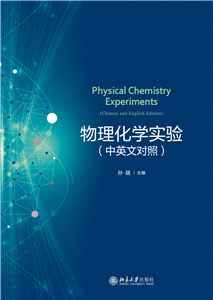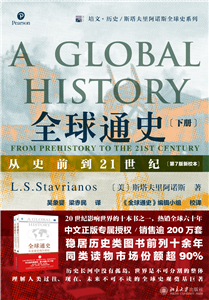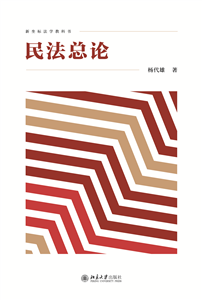基本信息 Information

物理化学实验(中英文对照)
第一章 绪论 1.1 物理化学实验的目的和要求1.2 物理化学实验室安全知识1.3 误差分析和数据处理1.4 常用实验数据处理软件 Origin 的使用 第二章 基础实验 实验 1 燃烧焓的测定Experiment 1 Determination of the Heat of Combustion 实验 2 氨基甲酸铵分解反应平衡常数的测定 Experiment 2 Determination of equilibrium constants for the decomposition reaction of ammonium carbamate 实验 3 凝固点降低法测定葡萄糖的摩尔质量 Experiment 3 Determination of molar mass of glucose by freezing point depression 实验 4 双液系的气-液平衡相图Experiment 4 Binary gas-liquid phase diagram 实验 5 KCl-HCl-H2O 三组分系统相图的绘制 Experiment 5 Construction of the phase diagram for the KCl-HCl-H2 O ternary system 实验 6 蔗糖水解反应速率常数的测定 Experiment 6 Determination of the rate constant for sucrose hydrolysis reaction 实验 7 乙酸乙酯皂化反应速率常数的测定 Experiment 7 Determination of the rate constant for the saponification reactionof ethyl acetate 实验 8 原电池电动势的测定和相关热力学函数的计算 Experiment 8 Determination of electromotive force of galvanic cell and calculation of thermodynamic functions 实验 9 电势-pH 曲线的测定与应用 Experiment 9 Determination and application of potential-pH curve 实验 10 循环伏安法研究铁氰化钾的电化学行为 Experiment 10 Study of the electrochemical behavior of potassium ferrocyanide using cyclic voltammetry 实验 11 最大泡压法测定溶液的表面张力 Experiment 11 Determination of surface tension of solution by maximum bubble pressure method 实验 12 溶液吸附法测量固体物质的比表面 Experiment 12 The specific surface area determination of solid materials by solution adsorption methods 实验 13 溶胶的制备和性质研究 Experiment 13 Preparation and properties of sol 实验 14 黏度法测定水溶性高聚物的平均摩尔质量 Experiment 14 Determination of average molar mass for water-soluble macromolecules by viscosity method 实验 15 配合物的磁化率测定 Experiment 15 Determination of the magnetic susceptibility for the complex实验 16 甲醛分子的结构和性质的计算化学研究 Experiment 16 Computational chemistry study of the structure and properties of formaldehyde 实验 17 甲烷分子的结构和性质的计算化学研究 Experiment 17 Computational chemistry study of the structure and properties of methane 实验 18 富勒烯在不同工作介质中的电化学行为研究(虚拟仿真实验)Experiment 18 Study on the electrochemical behavior of fullerene in different working media ( virtual simulation experiment) 第三章 综合实验 实验 19 气相色谱法测定非电解质溶液的热力学函数 Experiment 19 Determination of thermodynamic function of non-electrolyte solution by gas chromatography 实验 20 生物酶催化反应动力学常数的测定 Experiment 20 Determination of kinetic constants of reaction catalyzed by bioenzyme 实验 21 电导法测定水溶性表面活性剂的临界胶束浓度 Experiment 21 Determination of the critical micelle concentration of water-soluble surfactants by conductivity 实验 22 溶液法测定极性分子的偶极矩 Experiment 22 Determination of dipole moments of polar molecules by solution method 实验 23 常压顺-丁烯二酸催化氢化 Experiment 23 Catalytic hydrogenation of maleic acid at normal pressure 实验 24 氨分子与水分子的二聚体稳定结构及其氢键强度预测 Experiment 24 Prediction of stable structure and hydrogen bond strength for dimer of ammonia and water molecules 第四章 研究设计型实验 实验 25 氧氟沙星在固体电极表面的电化学行为 Experiment 25 Electrochemical behaviour of ofloxacin on the surface of solid electrode 实验 26 稀土金属直接加氢制备纳米稀土金属氢化物 Experiment 26 Preparation of nano rare earth metal hydride by direct hydrogenation of rare earth metal 实验 27 低温等离子体直接分解 NO Experiment 27 Direct decomposition of NO by low-temperature plasma 实验 28 氢质子交换膜燃料电池的组装与性能测试 Experiment 28 Fabrication and properties determination of hydrogen proton exchange membrane fuel cells 实验 29 甲烷生成焓和燃烧焓的理论计算 Experiment 29 Theoretical calculation of enthalpy of formation and combustion enthalpy of methane 实验 30 分子中原子电荷的理论计算 Experiment 30 Theoretical calculation of atomic charge in molecule第五章 课程思政建议 附录












